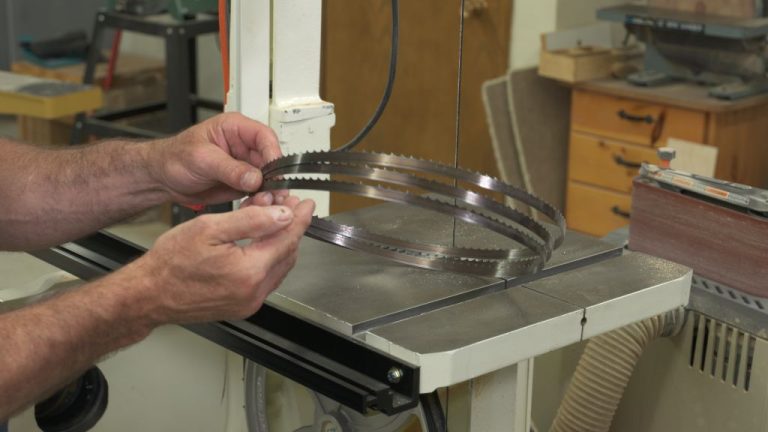What Are The Benefits Of The Roller Bed At The Chiropractor?
A roller bed, or decompression tables as they are also known, are a specialized treatment table used by chiropractors. The tables feature a moving split-table design that allows each side of the bed to gently move and stretch a patient’s spine and muscles. As the table sections roll, they create a distractive force along the length of the spine, gently stretching and decompressing the vertebrae and surrounding muscles.
The roller bed offers a variety of benefits and is commonly used to treat back and neck pain, improve spinal mobility, relax muscles, rehabilitate injuries, and correct posture and alignment issues. The gentle stretching facilitates increased blood circulation and reduces muscle tension. The tables allow chiropractors to safely and effectively manipulate the spine for pain relief, recovery from injuries, and overall wellbeing.
Improves Spinal Mobility
One of the main benefits of using a roller bed at the chiropractor is that it helps decompress the spine and improve range of motion. The gentle back and forth rolling motion of the table provides intermittent traction that helps separate the vertebrae, taking pressure off compressed discs and joints (1). This gentle pulling motion creates more space between each segment of the spine, allowing for improved mobility.
According to Hill Laboratories, the Anatomotor roller table is designed to provide soft tissue massage as well as intermittent traction (2). The rhythmic rolling technique helps mobilize the spine, flexing it back and forth to improve segmental range of motion. This oscillating movement can help reduce stiffness and increase fluid movement in the spinal joints.
The roller bed also facilitates spinal adjustments by the chiropractor. With the spine decompressed and joints mobilized, the chiropractor can effectively restore alignment and mobility to restricted spinal segments. The roller bed helps enhance the adjustments by pulling the vertebrae apart, allowing them to be repositioned into their optimal alignment.
Reduces Muscle Tension
One of the main benefits of using a roller bed at a chiropractor is that it helps reduce muscle tension throughout the body. The rolling motion applies pressure which releases muscle knots and trigger points, especially in the back, shoulders, and neck where tension commonly builds up [1]. As the roller bed moves along the spine, it provides a deep tissue massage that penetrates deep into the muscles. This helps loosen tense muscle fibers and increase blood flow and circulation in the area.
The pressure and movement of the roller bed mimics the effects of massage therapy. It essentially works out muscle knots and adhesions, bringing relief to chronically tight and tense muscles. Reducing muscle tension provides numerous benefits including improved flexibility, increased range of motion, and reduced soreness and pain [2]. Regular use of a roller bed as part of chiropractic treatment can help keep muscle tension at bay.
Enhances Circulation
The gentle massage action of the roller beds helps improve blood circulation throughout the body. As the rollers move along the back, they provide a kneading effect on the muscles which helps stimulate blood flow. This helps increase the circulation of oxygenated blood to muscles and organs.

Some of the benefits of improved circulation from using roller beds include:
- Increased blood flow to the back muscles, helping reduce soreness and fatigue.
- Improved transportation of nutrients to cells and tissues.
- Enhanced removal of metabolic waste products.
- Reduction in blood pressure.
- Potential improvement in conditions like arthritis that are exacerbated by poor circulation.
The roller bed massage imitates techniques used in manual therapy like effleurage and petrissage to boost circulation. The rhythmic and dynamic motion of the rollers helps pump blood through the blood vessels. Over time, regular use of a roller bed massage can help improve overall cardiovascular health.
According to sources, the relaxation induced by the the roller bed also plays a role in enhancing circulation. As the body relaxes, blood vessels dilate allowing for greater blood flow.
Promotes Relaxation
One of the key benefits of using a roller bed at a chiropractor’s office is that it promotes relaxation throughout the body. The soothing motion of rolling back and forth relaxes the nervous system by stimulating pressure points and releasing muscle tension.
According to this video, the rhythmic movement helps calm the body and mind before sleep. Relaxing on the roller bed helps reduce stress hormones and anxiety.
Similarly, research shows that gently rolling on the spine just before bedtime activates the parasympathetic nervous system, slowing heart rate and respiration (Goop). This promotes deeper, more restorative sleep.
By soothing and relaxing the nervous system, the roller bed provides lasting relaxation effects after the chiropractic adjustment.
Alignment Correction
One of the key benefits of using a roller bed at the chiropractor’s office is that it can provide gentle alignment corrections to the spine. The roller action gently mobilizes each vertebra and stretches the spine, allowing misalignments or subluxations to be corrected.According to one chiropractor’s video, the roller bed provides “intersegmental traction” which decompresses the spine section by section. This allows any areas of the spine that are stuck or fixated to be gently encouraged back into proper alignment.
The gentle oscillating motion of the rollers is often more comfortable and less jarring than manual adjustments. Patients with sensitivities to direct spinal manipulation may appreciate the gradual re-alignment provided by the roller bed. As the back muscles relax, the spine is able to shift into proper positioning. Regular use of a roller bed table can help maintain these corrections between chiropractic visits.
By realigning the vertebrae, the roller bed also takes pressure off pinched nerves. This reduces pain signals and allows the body to come back into balance. The overall result is a straighter, healthier spine.
Pain Relief
One of the main benefits of using a roller bed at a chiropractor is pain relief. The rolling motion helps release pressure on compressed nerves and joints, providing natural pain relief without drugs or surgery (Amazon). As the body rolls over the moving bed, the gentle massage motion targets trigger points and problem areas, reducing inflammation and muscle knots. The motion loosens tight muscles, relaxing the surrounding nerves and tissues. This releases pinched nerves, alleviating associated pain, numbness, and tingling (Chirp). By decompressing joints, it also relieves arthritis pain in the spine, hips, knees, and other joints. The roller bed is an excellent way to find pain relief without medications or injections.
Improved Posture
Using a roller bed can help improve posture by strengthening core and back muscles. As you roll back and forth on the roller bed, you are engaging your core to stabilize your body. This helps strengthen muscles like the erector spinae in your back as well as the transverse abdominis in the front of your core.
Specific exercises like the ones demonstrated in this video target posture-related muscles. Doing exercises like the thoracic spine roll and the cervical roll on a regular basis can train the muscles to maintain proper alignment.
According to one source, foam rolling exercises can “help improve mobility to the spine and improve posture.” The rolling motion massages tight muscles surrounding the spine, allowing you to sit and stand taller.
Injury Rehabilitation
The rolling motion of a chiropractic roller bed can aid in the rehabilitation of injuries such as strains, sprains, and muscle tears by gently mobilizing the spine and loosening tightened muscles and joints. One study from Orthopedic Journal of Sports Medicine found that spinal mobilization techniques helped reduce pain and improve range of motion in patients with acute lower back sprain injuries. The rolling motion provides gentle mobilization of each segment of the spine to encourage proper alignment and movement after an injury. This helps reduce inflammation and muscle guarding that can occur after acute strains or sprains.
Chiropractors may have patients lie on the roller bed and gently rock side to side or rotate the pelvis to encourage spinal mobility and relaxation of the paraspinal muscles. This aids the recovery process by restoring normal biomechanics and neurological function. The roller bed allows chiropractors to provide these mobilization techniques in a supported, controlled manner compared to manual joint mobilizations. For patients recovering from significant back or neck injuries, the roller bed offers a safe way to begin restoring range of motion and flexibility in the injured area without risking further damage.
Conclusion
The roller bed is a valuable treatment tool used by chiropractors to provide a variety of health benefits to patients. As outlined in this article, using a roller bed can improve spinal mobility, reduce muscle tension, enhance circulation, promote relaxation, correct alignment, relieve pain, improve posture, and aid in injury rehabilitation.
The unique rocking motion of the roller bed gently mobilizes the spine to increase range of motion between vertebrae. This spinal mobility allows for better joint function. The rhythmic movement also helps relax tight muscles that may be contributing to back and neck pain.
As the bed rocks, it lightly compresses and releases pressure on the body. This massage-like effect gets blood circulating to bring oxygen and nutrients to soft tissues. Overall, the motion of the roller bed creates a calming, soothing sensation that melts away muscle tension.
In addition to the many therapeutic benefits, the roller bed is an excellent tool for chiropractors to use in restoring proper spinal alignment. The mobilization and stretching of tissues allows misaligned vertebrae to be gently repositioned back into their optimal arrangement.
With regular use, the roller bed can provide progressive and cumulative improvements in spinal health, posture, muscle flexibility, circulation, pain relief, and overall wellbeing. Patients leave feeling relaxed, refreshed, and realigned.




